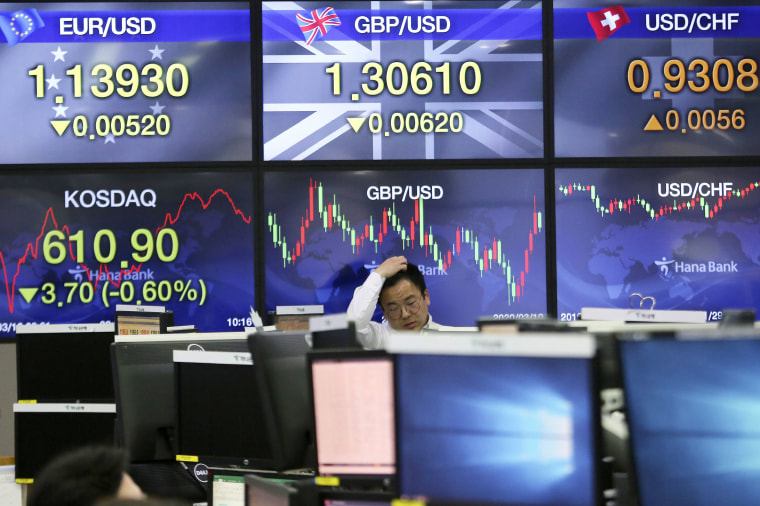Stock futures rallied early Tuesday morning after the S&P 500′s worst day since the financial crisis.
Around 7 a.m. ET Tuesday, futures on the Dow Jones Industrial Average indicated an opening surge of more than 1,000 points. S&P 500 futures and Nasdaq-100 futures also pointed to a sharply higher open for the two indexes on Tuesday.
Stock futures erased big losses and turned positive after President Donald Trump floated the idea of “a payroll tax cut or relief” to offset the negative impact from the coronavirus. The potential tax incentives come on top of an $8.3 billion spending package Trump signed last month.
The market suffered a historic sell-off in the previous session, with the Dow and the S&P 500 plunging 7.8 percent and 7.6, respectively, both posting their worst day since 2008. The Dow’s 2,013-point drop was also the biggest point drop for the 30-stock average ever.
The deep stock rout is putting the record-long bull market in jeopardy. With Monday’s drop, the S&P 500 is 19 percent below its intraday all-time high of 3,393.52 from Feb.19. The benchmark would fall into bear market territory if it slumps 20 percent from its peak or more.
Oil prices move higher
Meanwhile, oil prices saw some respite early Tuesday. As of 5 a.m. Tuesday, U.S. West Texas Intermediate crude futures were up 3 percent at $35.33 per barrel. International benchmark Brent crude futures added 3 percent at $32.11 per barrel.
That came after a shocking all-out oil price war roiled markets already on edge about the economic fallout from the fast-spreading coronavirus. Oil posted its worst day since 1991, with the WTI plunging more than 24 percent Monday, after Saudi Arabia slashed crude selling prices for April following the collapse in OPEC talks.
“The double-whammy of the continued problems from the coronavirus and the new oil price-war induced by the Saudis has caused stock markets around the globe to fall out of bed,” Matthew Maley, chief market strategist at Miller Tabak, said in a note Monday.
Monday’s monster sell-off triggered a key market circuit breaker that resulted in a 15-minute pause in trading early in the session.
Investors continued to seek safer assets amid additional fears that the coronavirus will disrupt global supply chains and tip the economy into a recession. The yield on the benchmark 10-year Treasury note dropped below 0.5 percent for the first time ever, while the 30-year rate breached 1 percent. At one point early Monday, the 10-year slid to 0.318 percent.
